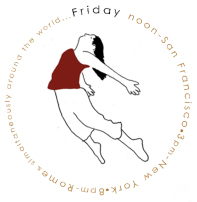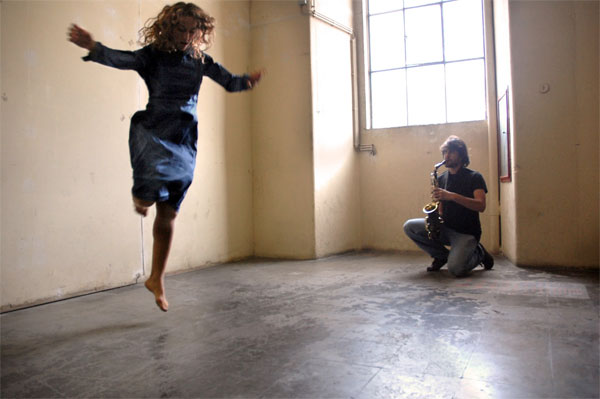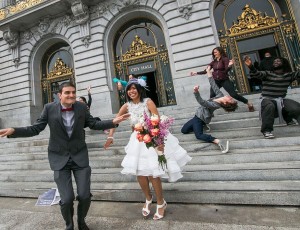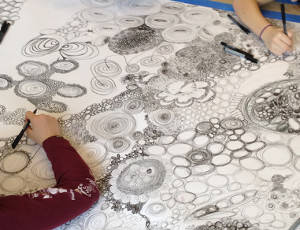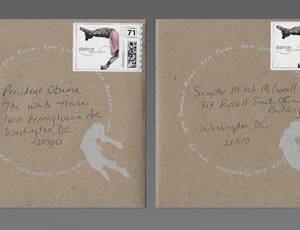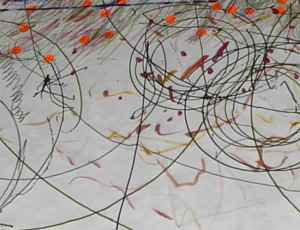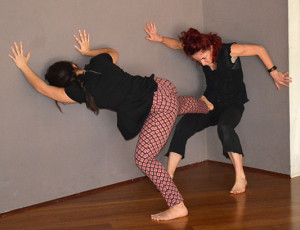Dance Anywhere celebrates art happening in non-traditional space and in innovative ways, and the work of landscape architect and choreographer Pedro Prazeres certainly upholds these ideas. Originally from Portugal, he is currently based in Prague, CZ, and has traveled and worked internationally. He is a founding member of Homeless Kingdom, an art platform whose projects explore dance, photography, landscape architecture, and other media. I spoke with him about his unique artistic perspective and approach to dance. The following are excerpts from our conversation:
How did you get into dance?
One of my colleagues told me, ‘why don’t you start to dance? There’s these nice classes in Dundee in the theater,’ and so I started to dance. Because, I’ve tried in the theater a little bit of movement and it was alright. I liked it very much. As soon as I started to dance I understood this connection. Or, I couldn’t verbalize it or rationalize it but there was a huge connection between landscape, and between what I’d learned in landscape, and between dance. The use of body and movement. How the landscape moves as well or how it’s shaped. The shapes, the speeds, the times, it was related in this way.
You’ve done some site-specific work. As a landscape architect, do you like that very much?
Yes, very much. It inspires me a lot. Although I also like to create on the stage […] But what I wanted to say was, yes I’m very inspired by bringing landscapes into the stage and bringing dance into the landscape. Or movement. So it’s these two fields that I’m trying to combine and bring concepts of one to the other and the other into the one, and to connect them in this way. […] And also I think it’s the way that the space can be transformed. That’s what I really like in dance, is that you see the space, in site-specific things, is really to relate with the space in the way that it, the space, dances with us. As when we are transformed while dancing into something which is outside of the ordinary, extra-ordinary if I can say it like this, the space also should have this. . . it should have this effect on the space. By the way we move, the space will dance with us and will transform itself. There’s kind of a metamorphosis happening, that things become different into kind of a parallel reality, which is what I aim for. It’s very difficult of course, but well it’s a goal. It’s a process.
You’ve done some set choreography and some improvisation. What is different about it? Do you like improvisation more, Or…?
I like both. I find it very interesting although they belong to each other in a way. I think there’s. . . it’s only a matter of shifting the balance of things. There’s always a little bit of improvisation in the choreographies and there’s always a little bit of choreography or composition in a way in the improvisation. So I see it more or less in the same field, but if you can have something that moves from one side to the other. Maybe this will be more proximal to an improvisation performance, this will be more proximal to a choreography performance.
On a piece that explores this range, I can maybe call it structured improvisation. I don’t really know if I can call it yet cause I didn’t find the right meaning for it. But I think it fits into this category. And which I had created a landscape, if I can call it in this way, in which I knew exactly which points in time is fixed, and I just allowed myself to go through it. Although the quality of the movement was fixed, I knew the qualities I wanted to have in each section, and how to develop them in each section, and what would come after. The movement itself was improvised […] but there’s a rule and I have to follow that rule.
Where do you get inspiration for your work?
In terms of dance. What I did before, I tried to allow things to come and then to understand them. So basically not to force myself into a direction, but to understand which direction is driving me. And then I can recognize oh I got this from this place, I got this from that place, I got this from this place.
How do you create through improvisation? Interact with other dancers, musicians, the space?
It’s more a sensation or perception. That’s why I like to use the word listening, because you are listening to it and not watching it. So it’s also our state of being, is very different. We have one. . . I need to feel that I need to be extremely open to everything that can come from outside and from inside, so that I can actually react to it. Or, allow myself to react to it. If I’m closed, or if I’m holding something, if I’m thinking that I should maybe do this or I should maybe do that, it just doesn’t work. I lose the moment and I cannot grab, I cannot be in the moment. And it happens, of course. It happens sometimes. . . I missed it. . . shit I missed it . . . Ah! damn, okay. . . and now I miss it again. [laughs] But, it’s just I think it demands a lot of practice to reach a time when you can be fully in a performance without losing the moment.
How is it different improvising with a musician or a dancer?
If I can abstract it, maybe vibration would be a good word for it. There’s the food that I get from other dancers, and the food I get from music. Vibration could be maybe the word that could describe. . . not the differences but actually what is common between these two.
Do you think dance can communicate to an audience that doesn’t know anything about the art form?
I think yes. I think that dance would be made for that. . . As an interpreter and as a choreographer, in my opinion I should provide a product which is able to be understood by the biggest range of people. In this understanding I would mean that I would be giving a concrete message. And what I expect is that I have an abstract form of art that can be interpreted by as many people as possible. But this interpretation will then relate and depend on each one’s individual experience, obviously in a way. So this is how the combination of these tools should create something, which drifts from the reality which we live in into a parallel reality, but that communicates with the conscious and, maybe, hopefully, subconscious of the person who sees it or who perceives it.
On Homeless Kingdom and its projects:
So these relations can happen, which I’m really interested. Relations between landscape and dance, and also photography. So, we are trying to combine these three art forms into something, and to create a product out of it and create projects with it. And this is something I’m very interested in. We’ve created recently this project which is Kinetic Landscapes. […] so it’s the use of stroboscopic lights, y’know, these flash lights in photography. So you take one shot then tik tik tik tik and the light is kind of moving and it creates landscape out of the movement of the body in a way. It’s a very abstract image what comes out of it, but I feel it’s very deep. So the project is how to create these images, how to explore that, to really really explore. We just have this idea to create, we tested it a little bit and it works. So we really want to develop it into a series of works that we can do, a project. And also how to create a live performance out of it and how to understand to create these kinetic landscapes. And also, how to choreograph while taking the pictures; how to choreograph the movements in order to achieve some results. So it’s a complex project that is starting to grow a lot and I’m very excited with it.
On “Hotel Room,” performed at Axa in Action in Prague, CZ:
We had three characters which were sharing the same timeline and the same space line, but they don’t belong to the same story. So what the audience would see was three people interacting in one hotel room, but the inter motion of each character is displaced from each other. If I can call it like this. So they don’t relate to each other on a storyline, but they are of course having relations of energy and things that’s impossible because they are in the same small space and things do happen. And there can be contact and there was contact, and so that was interesting. But still the characters are out of each other, in a way. And so Vicente wrote these three characters. He explained more or less what he thought it could be, the motion inside. And the idea of the interpreters was to inhabit these characters, to understand what they are, and to improvise with it. So it was also an improvisation although with a character inside. […] and that for me was extremely interesting. Cause we had three days, and we planned it to be that we had the performance of fifteen minutes every hour, or something like this. But then it happened that it was not possible because people were coming in and out, and then they would come at the end, and so they wouldn’t see. So we just decided to, okay let’s just stay as long as we can hold it. And if there comes a time we need to go out, we go out, and we come in. So it was something that was always constantly looping and constantly on. […] This was another thing we had in mind was that we had to make a loop. So even if we were improvising, we had to loop it back into the same state […] go into the same motion, even if it was not the same movements, specifically, or the same things. . . but we had to show the same message in a way.
On a project currently in development:
And, another project I’ve started is the scaled landscapes […] which is to work with different kind of scientific things and with ecologists, mainly landscape ecologists, and geologists, or people who work with landscape and who understand the landscape, sociologists also. And to understand one object, what’s it’s motion? I mean object not as a physical object, but as something which is exists, if I can call it like this. For example, let me say we have a square where we zoom in and we see that there are these little little bugs that move inside. If we zoom in this table for example, microscopically we would understand that are little bacterias or little things that are moving there and how do they move? What is there motion? What is their will to move? They’ll go towards food, they go away from light. How do they move, and what is this movement? So to scale this little thing into something bigger, which can be interpreted then by us as humans, and to place it somewhere else to understand how the space can be then transformed. This is one example but there’s many more. […] on this idea of scaling things; scaling up, scaling down, and transforming them.
On “De Profundis” in Prague, CZ:
We did another one which was called “De Profundis” […] which was here in Prague. This very simple project, but the outcome was very nice. It was a weekend in a house in the forest close to Prague. And in March, very very cold. And the idea was to have naked bodies in the landscape in the forest, and what came out was a very good result. It was basically improvised, so I asked some artist which I knew I’d like to work with, just to go and to explore the space. And how can we relate with each other? And how can we relate with nature? How can nature relate with us? And the sensation of the skin of the cold surface, the cold air and the naked body. It was very interesting, really magical weekend and the outcome was also very nice.
More information about Homeless Kingdom, it’s projects, and upcoming performances can be found at:
http://www.homelesskingdom.com/
http://www.facebook.com/pages/Homeless-Kingdom/199870796716368
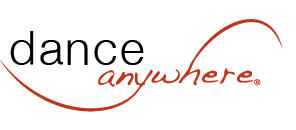
 Sign In
Sign In